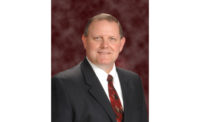Every successful project starts with a framework. A vision statement. A blueprint. The editors of Engineered Systems are proud to present The Blueprint — a monthly Q&A interview with HVACR engineering’s leading voices. These one-on-one discussions will examine the trade’s history, current industry trends, the factors shaping the sector’s future, and more.
Founded as a family plumbing business in 1885, Trane incorporated after creating an innovative low-pressure steam heating system. The company continued to launch groundbreaking products, like Turbovac, a type of water chiller that fundamentally altered the industry’s approach to large-building air conditioning systems.
In 2020, Trane Technologies was formed. It followed Thermo King’s acquisition in 1997 and Trane in 2008 — two industry heavyweights known for progressive innovation. Along with a diverse portfolio of top companies in the industry, Trane Technologies sets its sights on creating a sustainable future for our planet.
Recently, Scott Huffmaster, healthy spaces sales leader, Americas Commercial HVAC, Trane Technologies, sat down with Herb Woerpel, editor-in-chief of Engineered Systems, to introduce Wellsphere, define its influence, and more.
To see all of Engineered Systems' Blueprint Q&A interviews, click here.
Engineered Systems: Scott, thank you for your time today. Can you start out by introducing yourself to our audience?
Scott Huffmaster: As the healthy building solutions sales leader at Trane Technologies™, I am responsible for leading Trane’s indoor environmental quality (IEQ) efforts for the U.S. and Canada, including Wellsphere™, Trane’s holistic approach to building wellness that cultivates healthier indoor spaces by enhancing air quality, thermal comfort, lighting, and acoustics.
As an engineer, I use my expertise to promote IEQ. I help customers design customized spaces that align with Trane’s strategic mission to create healthier indoor spaces and lower the energy intensity of buildings.
Engineered Systems: Earlier in the year, Trane made a splash in the industry by introducing Wellsphere. What exactly is Wellsphere, and how will it impact the built environment?
Huffmaster: Wellsphere is a platform from Trane® that cultivates healthier indoor spaces holistically by enhancing air quality, thermal comfort, lighting, and acoustics. Trane assembled experts to help operators assess and improve a building’s health, ultimately improving the comfort and wellness of the building’s occupants. Match that with Trane’s innovative portfolio of technologies, solutions, and services, and building owners and engineers can create built environments that people feel comfortable and more confident to be in, whether at school, work, dining, or shopping.
Engineered Systems: You mentioned the acronym IEQ. What does IEQ incorporate and how does it differ from the more widely recognized IAQ?
Huffmaster: Indoor environmental quality (IEQ) is an industry term, defined by ASHRAE, that addresses the entire environment, not just the air, which is what indoor air quality (IAQ) is. At Trane, we look at IEQ as four different pillars: thermal comfort, lighting, IAQ, and acoustics.
Engineered Systems: Explain to me the process of how Trane and Wellsphere assess and address air quality, thermal comfort, lighting, and acoustics. Does Trane work with HVACR contractors/engineers to complete this process or does Trane handle this work completely in-house?
Huffmaster: Trane can work with customers directly to assess their IEQ and fully execute recommended solutions. We can also support contractors and consulting engineers to know what metrics to evaluate and how they might alter their designs to improve indoor environments.
When assessing the indoor environment in its entirety, we look at how thermal comfort, lighting, IAQ, and acoustics impact the people in the space. Technicians take readings using lighting, humidity, temperature, and CO2 sensors and sound meters to gather science-based data to evaluate the IEQ.
Thermal comfort impacts business value and productivity. Multiple studies over the last 30 years have shown that the more comfortable people are, the more productive they become. Trane’s core competency is creating thermal comfort. We assess whether the temperature and the humidity are suitable for the space and what’s happening in it. Although personal factors, including a person’s metabolic rate and clothing insulation, impact thermal comfort, building owners and designers can manage the environmental factors, including air temperature, air speed, and humidity.
Due to the pandemic, much more focus is being put on IAQ. New technology is now available that can monitor air quality as well as mitigate negative air characteristics. To calculate air quality, we measure particulate matter (PM), total volatile organic compounds (tVOC), or carbon monoxide (CO) and carbon dioxide and (CO2). Then, we provide IAQ assessments that focus on four critical areas: dilute, exhaust, contain, and clean.
Lighting technology has made significant advancements, and lighting is now a science. Modern lighting strategies support human well-being and strategic goals, such as reducing energy intensity and costs. To evaluate the impact of lighting, we consider what natural light is available, the existing artificial lighting, and how it impacts the occupants. For instance, if that space has natural daylighting, do you need to reduce the light generation, so it’s not too bright or not too dark?
It only takes moments to notice when an ambient noise level doesn’t feel right for the building. While many factors contribute to indoor sound, and HVAC systems may be significant yet manageable contributors. To gauge sound, engineers monitor acoustics throughout the day. Is there noisy equipment that’s causing sound pollution? Or, is it too quiet — so quiet that people can’t focus? Sometimes we add sound to an environment with noise generation and white noise.
Engineered Systems: What guidelines, benchmarks, or parameters does Wellsphere use to determine the “health” of each of the four segments mentioned in the previous question?
Huffmaster: ASHRAE sets industry guidelines for both thermal comfort and IAQ. ASHRAE has collaborated extensively with the U.S. Centers for Disease Control (CDC) during the pandemic. The CDC recommends commercial building operators follow ASHRAE standard 62.1 for ventilation system design and acceptable IAQ.
Health care, education, commercial real estate, and other industry organizations have guidelines and standards for lighting. And, in nearly every industry, research has determined the sound levels optimal for the human experience. Trane provides the data required to achieve those levels.
Engineered Systems: Is there a contractual maintenance aspect available that keeps a building in tip-top shape after the initial work is done?
Huffmaster: Trane offers various service agreements and technologies that can maintain a building’s IEQ. Trane's field team experts can visit a facility to maintain systems and ensure top performance. We also offer digital solutions, such as remote monitoring. Customers can also use a layered approach of remote technology along with actual physical service of the building.
Engineered Systems: COVID-19 certainly makes a service like this relevant. Talk about the impact the pandemic has had on commercial buildings and how Wellsphere can help restore hope in co-working environments.
Huffmaster: Wellsphere is all about confidence — bringing confidence back to the people within a building and communicating to them that the building meets the relevant guidelines. Trane helps operators build that confidence back up by supporting them through a three-stage process to assess, mitigate, and manage IEQ.
In the first stage, assessment, operators work to understand the current conditions in their buildings. Second, mitigate, they take actionable steps to improve the conditions to meet the guidelines and support the tenants with proven solutions. The last stage is to manage — building operators have to maintain that performance and share the results with their tenants.
That is why monitoring and visualizing the building’s performance is essential, so occupants know the improvements that management has made. Many new technologies communicate proof of the building’s environmental quality — kiosks, digital dashboards, reports, and more.
Using the Wellsphere platform, building operators and designers can show what they are accomplishing and that they support the people in the building with proper IAQ and IEQ.
Engineered Systems: Consumers and professionals alike recognize certification stamps, such as Energy Star and LEED. Could we soon see Wellsphere recognition as a way to ease occupants’ minds?
Huffmaster: Building owners, managers, and tenants seek validation of IEQ through independent, healthy building certifications and recognition. One of the leading organizations in the field is the International Well Building Institute® (IWBI). A simplified version of IWBI’s WELL certification offering, the WELL Health-Safety Rating, gives owners and operators necessary guidance and a third-party verification process to adapt to health and well-being considerations.
As a proud member of the IWBI, we are actively working with the organization to help solve today’s IEQ challenges.
Trane also offers the Air System Quality Recognition Award, which demonstrates a building owner’s commitment to elevating IAQ and acknowledges one-time participation in Trane’s IAQ programs and processes.
Engineered Systems: While Wellsphere is heavily concentrated on the holistic health of a facility, what role does energy efficiency play?
Huffmaster: As we all look to improve indoor environments, we have to ensure we’re not negatively impacting the outdoor environment. If we take actions that don’t consider the effect on energy consumption, we are potentially increasing our carbon footprint with our activities.
Trane looks holistically at the indoor environment and the outdoor environment and the carbon footprint they both create.
As HVAC experts adjusted ventilation systems to bring in more outside air to mitigate for increased risks during the pandemic, there are countermeasures we can use to help offset the penalties that may create. For instance, updating control systems, using algorithms with more precise control, and providing newer equipment that is potentially more efficient — these steps and new technologies can help manage energy intensity while supporting a better indoor environment.
Engineered Systems: Have you worked with customers using the Wellsphere? How has the response been?
Huffmaster: Customers are embracing the Wellsphere holistic platform that is occupant-focused. More than 400 locations have earned Air System Quality Recognition Award from Trane.
Engineered Systems: As we wrap this up — one final question here. Why should the consulting/specifying engineers and facility managers reading this give Wellsphere a look?
Huffmaster: Consulting and specifying engineers are responsible for designing a system of comfort and well-being throughout a building. Trane is here to support the engineering community with the data, insights, and guidance to assess, mitigate, and manage IEQ.
Engineered Systems: Scott, thank you so much for your time. If our audience is interested in connecting with you or learning more about Trane’s Wellsphere, where should they turn?
Huffmaster: Trane has a website dedicated to Wellsphere. Click here, for more information.





